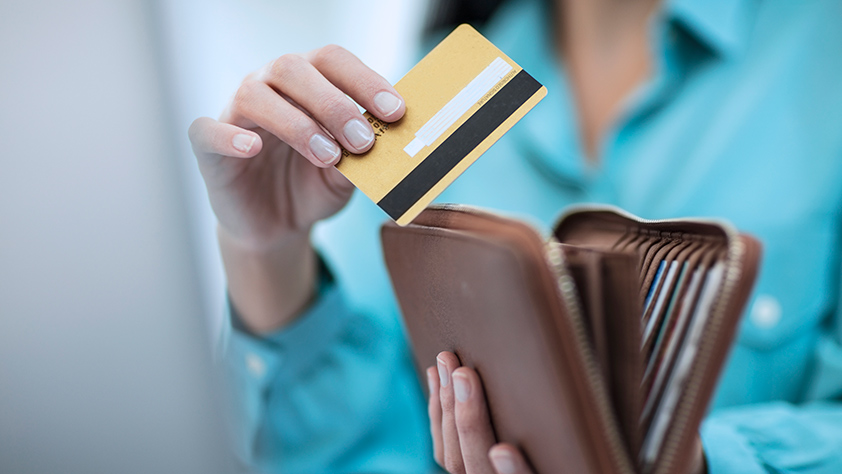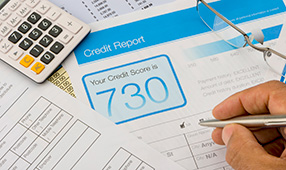From a personal finance perspective, a credit card can be your best friend or your worst enemy: Misuse it, and you’re subject to soaring interest rates and punishing penalty fees—not to mention a low credit rating. A “smart” card user, however, takes control of these plastic-enabled purchases to ensure minimal to no interest charges while pocketing cash-back rewards and building an enviable credit score (thus, saving on mortgage and major loan interest payments).
So how do you stay on the enlightened path? By following these nine best practices, as recommended by two financial experts:
1. Try to pay the balance in full. It’s not easy to pay off the entire balance every month. But you’ll reap significant, lasting benefits by doing so, with respect to your credit score. If you can’t currently afford this, at least strive to meet the minimum payment on time to avoid penalty charges. Then find ways to reduce spending to the point where you can handle the balance in full every month. In addition, don’t fall for the often-perpetuated myth that you have to carry a balance to build credit. “People who do this usually only have so-so credit or are looking to boost their score by just 10 or 15 points,” says Todd Christensen, an accredited credit counselor and director of education for the National Financial Education Center at Debt Reduction Services Inc., a nonprofit credit counseling agency. “Long-term, high ratings are built through solid, fundamental practices, such as paying off your debts in full every month.”
2. Pay on time. Whether you pay on time determines about one-third of your rating. Meanwhile, making a single late payment can negatively impact your score for seven years. “This is the No. 1 factor in building credit,” says Christensen, who is also the author of Everyday Money for Everyday People. “True, creditors cannot report a payment as late until it’s 30 days late. But they can charge fees and raise interest as soon as you’re one minute late.”
3. Take advantage of transfers. There are plenty of options to transfer your balance to a company that wants your business–and is willing to offer appealing interest terms to do so. This presents a viable “safety hatch” for those who are struggling to pay off large balances with huge interest charges. “There are balance transfer cards available which offer an intro period with no transfer fees, zero percent interest on the amount transferred and zero percent interest on new purchases,” says Matthew Coan, founder of Casavvy.com, a financial advice/information site. “The intro period can last more than a year. So using a transfer should address cash-flow problems while allowing you to get back on track financially.”
4. Watch out for fraud. One out of 10 Americans will become the victim of credit card fraud, with median losses at just under $400 per incident. That’s why you need to research your card company’s security/fraud coverage policies. Even if it does a vigilant job of alerting you about unusual purchases, you should proactively ensure that your account hasn’t been compromised. “Fraud happens all the time, so you have to review your statements at least every month,” Coan says.
5. Don’t take it to the limit. It is not OK to run up a balance that approaches your credit limit, because you’ll increase what’s called your “credit utilization ratio.” The ratio compares the amount of credit you’re using on your cards to your overall available credit, and it represents 30 percent of your FICO score. “Carry a balance of less than 30 percent of your limit–or even 10 percent,” Christensen says. “The further away from the limit, the better. And carrying no balance is best for our overall, long-term finances.” Learn how carrying multiple cards can keep your credit utilization ratios down.
6. Just say no to store-issued cards. They can run up interest rates of 20 percent or higher. “The stores know that customers who go for their 10 percent to 15 percent discount will pay far more interest in the long run than they save on the item,” Christensen says. Besides, store cards tend to have lower credit limits, so it’s easier to inflate the credit utilization ratio here and ding your score.
7. Don’t overdo it on rewards. Yes, there’s much to like about rewards programs. But purchase only what you’d normally buy instead of “spending up” on items simply to qualify for a reward. In addition, seek out the program that offers the very best cash-back options, as opposed to those promising to give you ‘stuff.’ However, if you think strategically, there are good reasons to carry these cards.
8. Charge big ticket buys. Use your card for a major appliance purchase or a nice vacation. Not only will you take advantage of cash-back rewards, but you’ll protect yourself in the process. “Many cards extend warranties, price protection, insurance against damage and/or theft and more,” Coan says. “It’s better than writing a check, which offers no such benefits.” Just be sure to pay off the big tally as quickly as possible.
9. Avoid cash advances. They generally carry a higher interest rate than standard purchases, and that rate kicks in immediately. “There is no grace period,” Christensen says.












